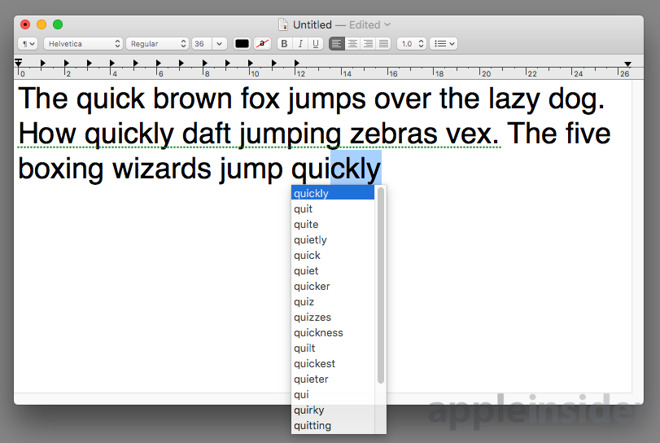Whether you adore or detest Word’s capability to ridicule your language abilities, you have the final say-so. Plenty of settings and options are available to control Word’s spelling- and grammar-checking tools. Undoing the Ignore All command Whoops! Did you click that Ignore All command when, in fact, Word was correct and your spelling was all. Apr 25, 2014 Have you ever been unsure if you spelled a word correctly, and didn't feel like looking it up in a dictionary or even online? The Spell Check app fixes that problem! Just type in a word or even paste in a whole paragraph, and with Windows 8's built-in spell checking system, you can see if.
Whether you adore or detest Word’s capability to ridicule your language abilities, you have the final say-so. Plenty of settings and options are available to control Word’s spelling- and grammar-checking tools.
Undoing the Ignore All command
Whoops! Did you click that Ignore All command when, in fact, Word was correct and your spelling was all wrong? Now that horribly misspelled word litters your document like the pox.
Fret not, gentle reader. You can undo the Ignore All spelling directive. Follow these steps:
Click the File tab.
Choose the Options command.
The Word Options dialog box appears.
Choose Proofing on the left side of the dialog box.
Click the Recheck Document button.
A warning dialog box appears, reminding you of what you’re about to do.
Click the Yes button.
Everything you’ve told Word to ignore while proofing your document is now ignored.
Click the OK button to close the Word Options dialog box and return to your document.


The Ignore All command affects only the current document. If you’ve accidentally added a word to the custom dictionary, see the next section.
Customizing the custom dictionary
Microsoft Word Spell Check Settings
You build the custom dictionary by adding properly spelled words that are flagged as misspelled. You can also manually add words, remove words, or just browse the dictionary to see whether or not you’re making old Noah Webster jealous. Follow these steps:
Click the File tab.
Choose Options to display the Word Options dialog box.
Choose Proofing.
Click the Custom Dictionaries button.
The Custom Dictionaries dialog box appears.
Word 2016 uses the RoamingCustom.dic file as the custom dictionary. You may see other files in the list, especially if you’ve upgraded from older versions of Microsoft Word.
Select the item RoamingCustom.dic (Default).
Click the button labeled Edit Word List.
You see a scrolling list of words you’ve added to the custom dictionary.
To add a word to the custom dictionary, type it in the Word(s) text box. Click the Add button.
To remove a word from the custom dictionary, select the word from the scrolling list. Click the Delete button.
Click the OK button when you’re done with the custom dictionary. Then click the OK button to close the Word Options dialog box.
Disabling automatic spell check
To banish the red zigzag underline from your document, which effectively disables on-the-fly spell checking, follow these steps:
The page explains how to connect to and transform data in Excel, with understandable categories and steps that show you how to create a query, and also how to share it. Tip: The collection of data import and transformation features available in the Get & Transform ribbon group in Excel are available in many Microsoft products. Getting Started with Get & TransformWant to see how a query can transform your data? Install microsoft query excel. These features are often referred to as Power Query.
Click the File tab and choose Options.
The Word Options dialog box appears.
On the left side of the dialog box, choose Proofing.
Remove the check mark by the item Check Spelling as You Type.
Click the OK button.
Microsoft home office 2016 mac student. If you also want to banish the blue zigzag of messed-up grammar, repeat these steps but in Step 3 remove the check mark by the item Mark Grammar Errors as You Type.
Curtailing grammar checking
Word’s grammar checker seems to be insistently incorrect. After all, English is fluid. Especially if you’re writing poetry or you just know the rules and prefer to bend them or toss them asunder, consider throttling back some of Word’s more aggressive grammar flags.
To adjust grammar settings, follow these steps:
Microsoft Word For Mac Always Spell Check Free
Click the File tab.
Choose Options to display the Word Options dialog box.
Choose Proofing.
By the Writing Style item, click the Settings button.
The Grammar Settings dialog box appears.
Uncheck those items you no longer desire Word to mark as offensive.
The categories are pretty general, which makes deselecting a rule difficult. That’s because when Word flags a grammar error, you see a specific rule and not the general ones listed in the Grammar Settings dialog box.
Click the OK button to dismiss the Grammar Settings dialog box.
Click OK to close the Word Options dialog box.
Spell Check On Mac
If you prefer to disable all the rules, instead deactivate grammar checking altogether.